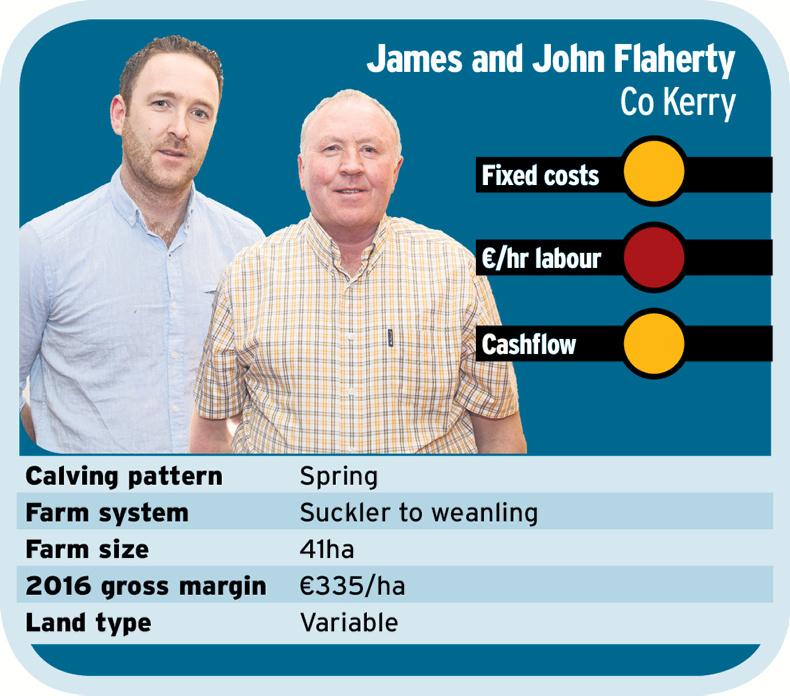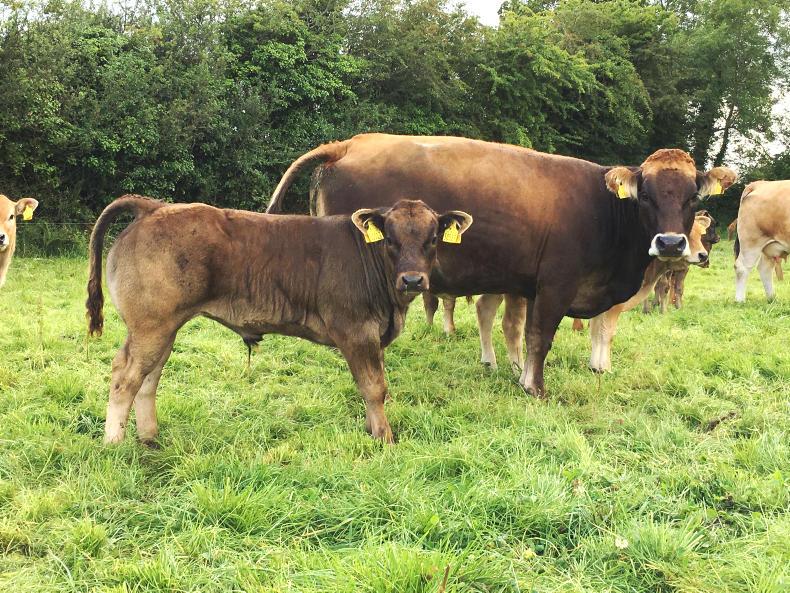James Flaherty and his father John are farming just shy of 41ha in Cordal, near Castleisland in Co Kerry. The farm is split in two blocks, with 17ha of rented ground located around one mile from the main yard. In 2017, the 46-cow herd calved from late-January until the first week of May.

John milked cows on the home block until 2003 and since then the farm has carried beef cattle and more recently sucklers. He was one of the first farmers in the area to buy into rotational grazing and the emphasis he placed on grassland infrastructure during his time milking cows means that the pair began their BETTER farm journey with one of the best laid-out farms in the programme.
“Every one of the 32 paddocks on the home block is accessible via roadway and we typically split them again with polywire and pigtails. I think our average grazing allocation area is just under three acres at a time,” James told me.
“With the wet weather that came in early August, our residency time in a paddock came way down to around half a day – I am glad to have the setup we do when things get very wet.”
Soil type varies on the Flaherty farm, with the rented land located on higher ground and having the ability to take more moisture. On Friday 21 July, after over 20mm of rain fell in 12 hours, James was forced to house a group of cows and calves overnight on the home farm.
“It was purely a damage limitation measure. We have the roadways and can move cattle easily and the shed was there, so we used it. They went out the very next morning with the sun on their backs. There was a bit of damage done, though it has recovered well.
“But as I said, grazing since then has been a bit of a smash and grab exercise. Little and often is the strategy – very small areas, moving once or maybe even twice daily. It means we keep utilising as much grass as we can, while keeping cattle satisfied. Once they get unsettled and start walking, you’ve lost the battle,” James said.
The herd
The Flahertys are passionate cattle breeders with a particular penchant for the Parthenaise breed. “You have nice handy cows, easy calving, good growthy calves and shape that’ll generate interest in the mart ring,” James said.
Traditional weanling-sellers, the Flahertys are rethinking their production system for the years ahead. “Prices were too inconsistent for me and with the efforts we’re putting in to breeding and driving the farm, I think there is scope to add more value. I’d like to move away from weanling production and towards beef production. We’ll sit down in the coming weeks to look at our 2017 batch of calves and see what we can do,” James concluded.
Listen to a discussion with the Flahertys in our podcast below:
James took a weight on his suckler herd on 8 August. All of our BETTER farmers will take both weaning weights and what we call a mid-season weight, like this one. The calves (46) are growing at a rate of 1.04kg daily, with males (22) doing 1.11kg and females (24) at 0.98kg. However, with a push on to build up the herd quickly, 2017 saw 13 heifers calve.
Calves by heifers are achieving daily weight gains of 0.87kg. Calves from the mature herd (33) are growing at 1.11kg daily (bulls 1.17kg, heifers 1.04kg). Their average DOB is 21 March and they weighed 198kg. Table 1 takes the top and bottom calves from a growth point of view from both the mature and first-calver groups.
Genetic propensity for milk is currently driving calf performance in the older cows. Amazingly, there is a gap of 75kg already opened up between a pair of calves born one day apart, with the heavier calf suckling a first-cross cow and the lighter animal on a continental cow who is 180kg heavier.
What will be interesting now is whether or not these growth rates continue right up to weaning, as calves now begin to mature as grazers and milk constitutes a lower proportion of their diet.






 This is a subscriber-only article
This is a subscriber-only article











SHARING OPTIONS: